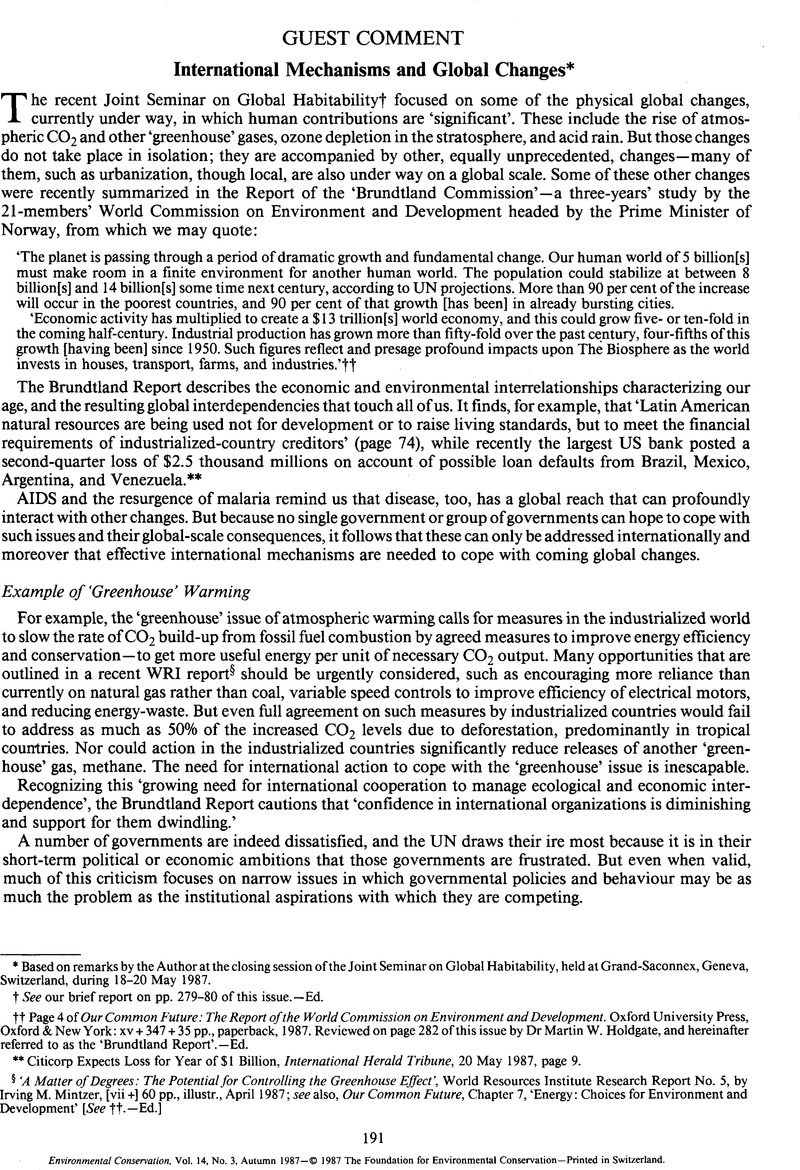Article contents
International Mechanisms and Global Changes*
Published online by Cambridge University Press: 24 August 2009
Abstract

- Type
- Guest Comment
- Information
- Copyright
- Copyright © Foundation for Environmental Conservation 1987
References
† See our brief report on pp. 279–80 of this issue.—Ed.
†† Page 4 of Our Common Future: The Report of the World Commission on Environment and Development. Oxford University Press, Oxford & New York: xv + 347 + 35 pp., paperback, 1987. Reviewed on page 282 of this issue by Dr Martin W. Holdgate, and hereinafter referred to as the ‘Brundtland Report’.—Ed.
** Citicorp Expects Loss for Year of $1 Billion, International Herald Tribune, 20 05 1987Google Scholar, page 9.
§ ‘A Matter of Degrees: The Potential for Controlling the Greenhouse Effect’, World Resources Institute Research Report No. 5, by Mintzer, Irving M., [vii +] 60 pp., illustr., 04 1987Google Scholar; see also, Our Common Future, Chapter 7, ‘Energy: Choices for Environment and Development’ [See ††—Ed.]
* ‘Radiation: Doses, Effects, Risks’, United Nations Environment Programme (UNEP), Geneva, Switzerland: Tables 4.1 and 4.7, 1985.
† ‘Stratospheric sink for chlorofluoromethanes: chlorine atom-catalyzed destruction of ozone’, by Molina, M. & Rowland, F.S., Nature (London), 249 (5460), pp. 810–2, 1974.CrossRefGoogle Scholar
†† The Vienna Convention of March 1985 has been signed by 27 governments and the EEC, and ratified or accepted by seven governments according to UNEP's 1986 Annual Report to the Executive Director, para. 44.
** See Professor Hans U. Dütsch's Guest Comment ‘The Antarctic “Ozone Hole” and Its Possible Global Consequences’, published on pages 95–7, illustr., of our latest issue.—Ed.
§ For a recent review, see ‘The Sky Is The Limit: Strategies for Protecting the Ozone Layer’, Report No. 3 by Miller, Alan S. & Mintzer, Irving M., [v +] 38 pp., illustr., 11 1986.Google Scholar
- 1
- Cited by




